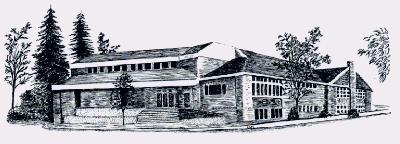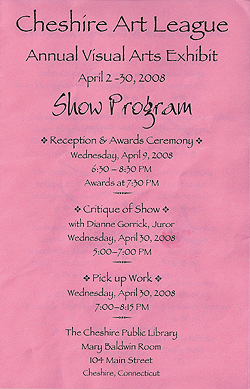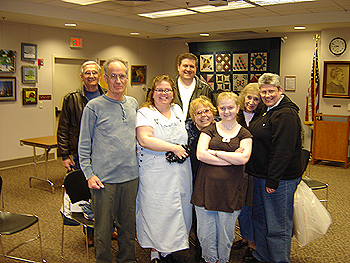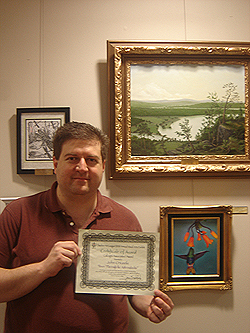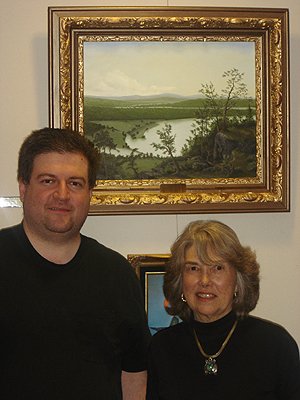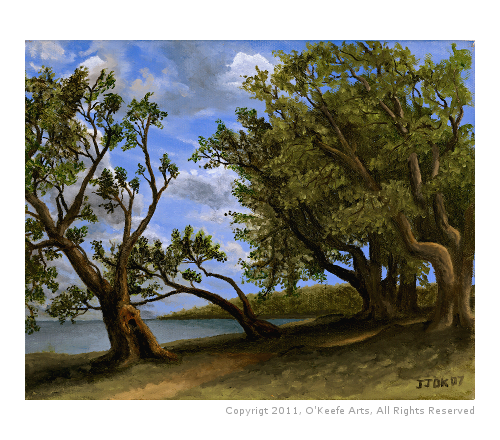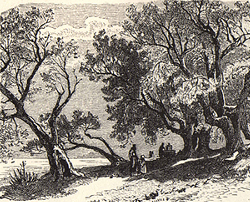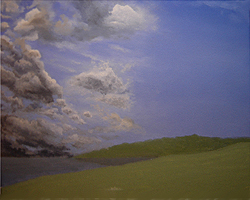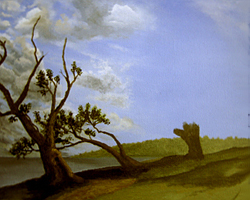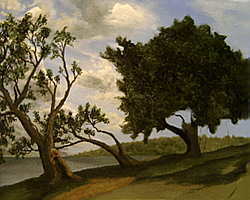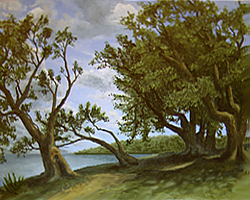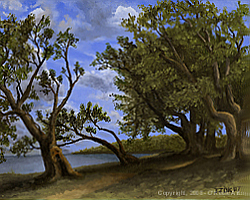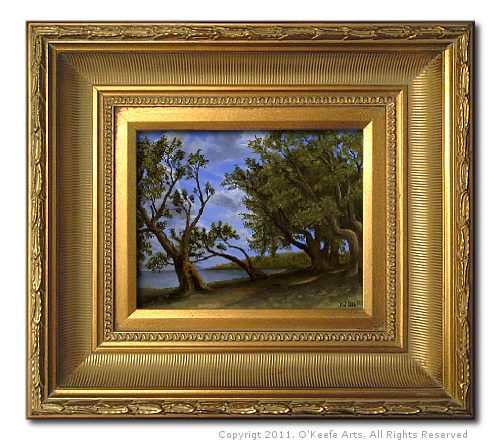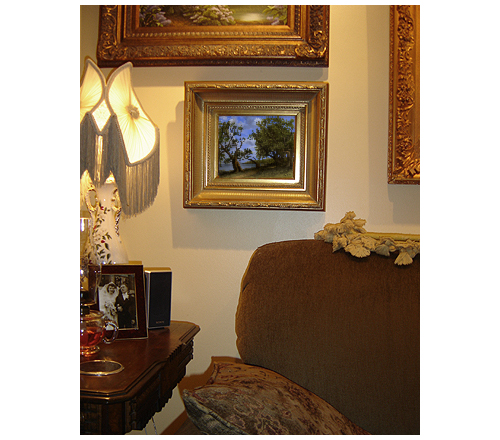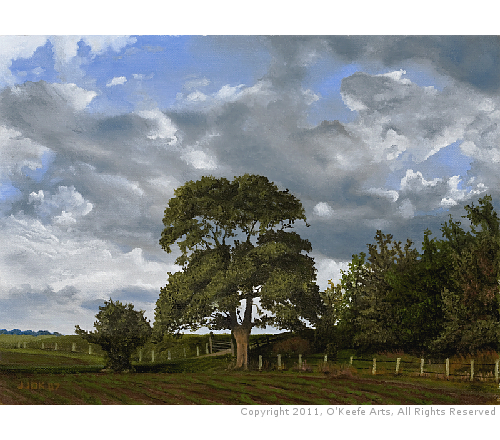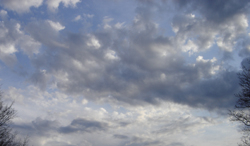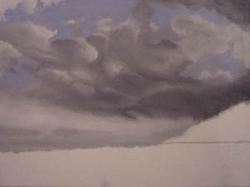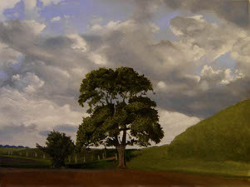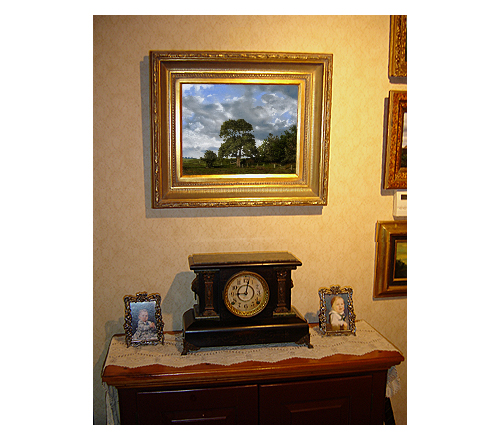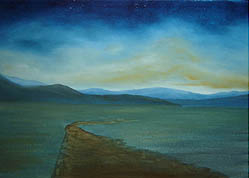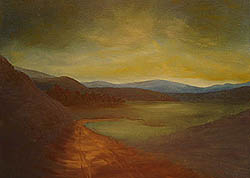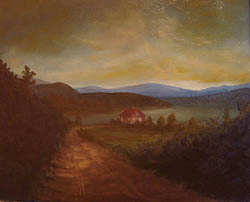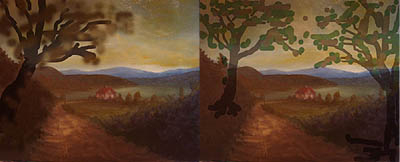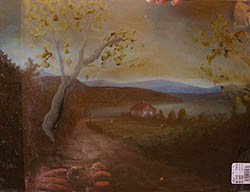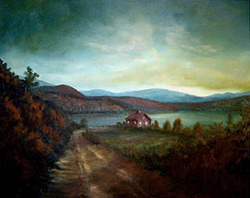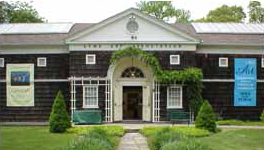
Old Lyme, Connecticut
The Summer Exhibition by Lyme Art Association was my second group exhibition. This significantly boosted my confidence because I was a newcomer to the Connecticut art scene. All of this was new to me, and I would be lying if I didn’t admit I was very nervous. Therefore, I was grateful to have Jennifer at my side, encouraging me.
Opening Reception (6-27-2008) – Summer Exhibition
The Summer Exhibition by Lyme Art Association held the opening reception on the 27th of June, 2008, from 6:00-8:00 PM, and over 200 guests attended the reception. Jennifer and I had the opportunity to meet and talk with David Leffel and his wife, Sherri McGraw. Specifically, we discussed my painting that they accepted into the exhibition.
“Excellent graphics. I love the contrast between light and dark. Unanimously accepted.” ~ David Leffel
Meeting other Artists – Summer Exhibition
Later, I met Graham Scott, Photographer, and Advertising Director for ‘The Art Guide.’ Graham was the one who directed me to the Lyme Art Association after viewing my work several weeks ago, and his compliments and encouragement led me to join the association as an Associate Member. Thereafter, he introduced Jennifer and me to Diane Aeschliman (Elected Member and Board of Directors). Also, Anna Grenier congratulated me on being accepted into the exhibition. Anna is the Managing Director of the Lyme Art Gallery. Additionally, she said, “This was a tough show to get in. Out of more than 200 submitted paintings, the number accepted was 60.”
Jennifer and I met Barbara Lussier (Elected Member and Vice President of the Board of Directors). And before the reception ended, we had an opportunity to meet ‘Smiling’ Don, a lovely older gentleman who had previously modeled for artists. We had a friendly conversation about our previous careers (before art), and he wished us success on this adventure.
Lastly, we met the Director of Sculpture for the Hudson Valley Art Association. Subsequently, We discussed the steps required to become an elected member, and he said he would help start me on that process.
Overall the evening was inspiring and fun, and I received many commendations for my work. And people said they looked forward to seeing more of me and my paintings.
About the Judges – Summer Exhibition
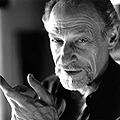
David A. Leffel has been internationally recognized as a “20th Century Old Master,” an honor that very few living American artists achieve. If we travel back to the 17th century Dutch Masters, most notably Rembrandt, who casts a powerful shadow on Leffel’s work, not only the shades of history but the artist’s immediacy that awakens us to his brilliance. Leffel is said to be a true master of chiaroscuro, not only with his shadow and light but with brilliant visual concepts. David Leffel is highly sought after not only as an artist but highly respected as an “Artist who Teaches.” Lyme Art Association is proud to welcome Mr. Leffel. 1, 2
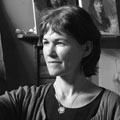
Sherri McGraw is a highly accomplished artist who firmly believes in developing as an artist through observation. She doesn’t encourage any mechanical means, such as measuring systems, to provide the artists to capture a likeness or the essence of an object. The artist must observe through visual relationships for creative expression. Ms. McGraw was born in Wichita, Kansas, and raised in Ponca City, Oklahoma. She is considered a highly accomplished painter and master draughtsman. Her serious art studies took place at the famous Art Students League in N.Y.C. after five years of college. She is also a practitioner of Chiaroscuro’s “way of seeing.” She has exhibited both nationally and internationally. Also, she is the author of “The Language of Drawing from an Artist viewpoint.” The Lyme Art Association welcomes Sherri McGraw. 3, 4
Footnotes:
- Image of David Leffel from www.oldmastersmaroger.com.
- Bio information for David Leffel as printed on Lyme Art Association’s 2008 Summer Exhibit event brochure.
- Image of Sherri McGraw from www.oldmastersmaroger.com.
- Bio information for Sherri McGraw as printed on Lyme Art Association’s 2008 Summer Exhibit event brochure.


